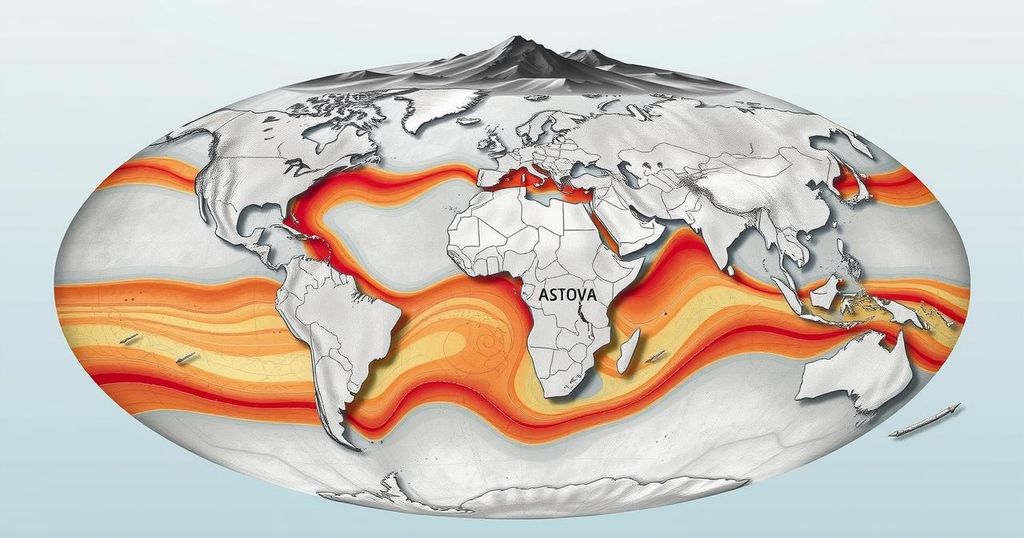This article discusses eight countries that are most prone to earthquakes, including Japan, Indonesia, Turkey, Greece, China, Iran, Mexico, and the United States. It highlights the factors contributing to their seismic risks and the significant impacts on their populations. The article emphasizes the importance of preparedness and infrastructural improvements to mitigate earthquake damage.
The country of Greece is currently in a state of emergency due to a series of persistent earthquakes affecting Santorini, which has experienced thousands of tremors, over 200 of which were significant. Greece frequently faces seismic activity owing to its geographical location along numerous fault lines. However, it is not the only nation subject to such risks; many countries worldwide face ongoing threats from earthquakes. Below, we explore eight countries that are particularly vulnerable to these natural disasters, discussing the reasons for seismic activity and the impacts on local populations.
Japan stands out as one of the most earthquake-prone nations globally, situated at the intersection of four major tectonic plates: Pacific, Philippine, Eurasian, and North American. It experiences thousands of minor seismic events annually, alongside severe earthquakes, such as the devastating Tōhoku earthquake and tsunami in 2011. To counteract the potential havoc caused by earthquakes, Japan has developed stringent building codes and effective early warning systems.
Indonesia, positioned on the Pacific Ring of Fire, is renowned for its high seismic and volcanic activity. The nation regularly faces powerful earthquakes, which are often followed by tsunamis. The 2004 Indian Ocean earthquake and tsunami, originating near Sumatra, resulted in one of the deadliest disasters recorded, affecting millions in several countries.
Turkey’s vulnerability is primarily associated with the North Anatolian Fault, one of the most seismically active regions worldwide. Major urban centers, including Istanbul, face a significant threat of severe earthquakes. A tragic illustration of this risk was the 1999 İzmit earthquake, which resulted in the loss of over 17,000 lives, underscoring the urgent need for enhanced infrastructure and disaster preparedness strategies in Turkey.
Further southwest, Greece faces a similar predicament due to its location at the junction of the African and Eurasian tectonic plates. The Greek islands, particularly Santorini and Crete, are at risk, especially given the recent upsurge in seismic events affecting Santorini. Throughout history, frequent earthquakes have influenced Greece’s geological landscape and architectural development.
China, with a long history of significant seismic events, particularly in its western and southwestern regions, faces considerable earthquake threats. The 2008 Sichuan earthquake, which measured 7.9 on the Richter scale, was devastating, resulting in the loss of nearly 90,000 lives. China’s seismic vulnerability is attributed to its location on various fault lines, including the prominent Himalayan seismic belt.
Iran is regarded as one of the world’s most seismically active nations, situated at the boundary where the Arabian and Eurasian plates converge. The nation has a record of catastrophic earthquakes, including the deadly Bam earthquake in 2003, which resulted in over 26,000 fatalities. The country’s aging and inadequate building infrastructures in several regions exacerbate the impacts of these seismic events.
Mexico finds itself at heightened risk for earthquakes due to its position along the Pacific Ring of Fire. The country has experienced numerous catastrophic seismic events, among which the 1985 Mexico City earthquake stands out for causing extensive destruction and loss of life. In response, Mexico has significantly improved its earthquake preparedness through the implementation of advanced warning systems.
Finally, the United States, specifically California and Alaska, frequently encounters seismic activity as a result of the San Andreas Fault and other tectonic boundaries. Historical events such as the 1906 San Francisco earthquake and the 1964 Great Alaska earthquake have caused considerable damage and casualties. While advancements in infrastructure have increased safety, these regions remain vulnerable to future seismic threats.
Earthquakes arise from the sudden release of energy in the Earth’s crust, typically due to tectonic plate movements along fault lines. Certain regions are more susceptible to these events due to their geographical locations near active tectonic boundaries. Countries situated along the Pacific Ring of Fire or near significant fault lines tend to experience more frequent and intense seismic activity, resulting in a greater risk of damage to infrastructure and loss of life. Understanding the seismic risks associated with these countries is crucial for disaster preparedness and response.
In conclusion, the examination of these eight earthquake-prone countries illustrates the extensive risks posed by seismic activity globally. Nations like Japan, Indonesia, and Turkey exemplify the devastating impacts of earthquakes, emphasizing the need for strict building codes and disaster preparedness initiatives. As such, understanding the geographical and geological factors that contribute to frequent earthquakes is essential for mitigating damage and enhancing safety for residents in affected regions.
Original Source: www.timesnownews.com






